Vine plants are a fantastic addition to any garden, providing both beauty and functionality. Not only do many vines produce stunning white flowers, but some even offer delicious edible fruits! In this article, we will explore a comprehensive list of 22 vines that boast beautiful white blossoms, along with some helpful tips and tricks for growing them successfully.
Starting off our list is the Japanese Climbing Hydrangea, also known simply as the Climbing Hydrangea. Originating from the woodlands of Japan and certain regions of the Korean peninsula and Sakhalin Island, this exquisite flowering vine may not be native to North America, but it has certainly found its way into many gardens. With a maximum length of 30 to 50 feet and a spread of 5 to 6 feet, this woody climber has become a favorite among gardeners.
Typically cultivated as an ornamental plant, the Japanese Climbing Hydrangea is often planted in garden pots or alongside tall trees. It is also commonly found growing beneath fences, utilizing them as a support structure for its climbing endeavors. To ensure successful growth, it is important to note that this vine thrives in full morning sun but requires shade during the hot afternoons, particularly in warmer climates. By giving it the proper sunlight conditions, you can encourage its white flowers to blossom vibrantly, enhancing the overall beauty of your garden.
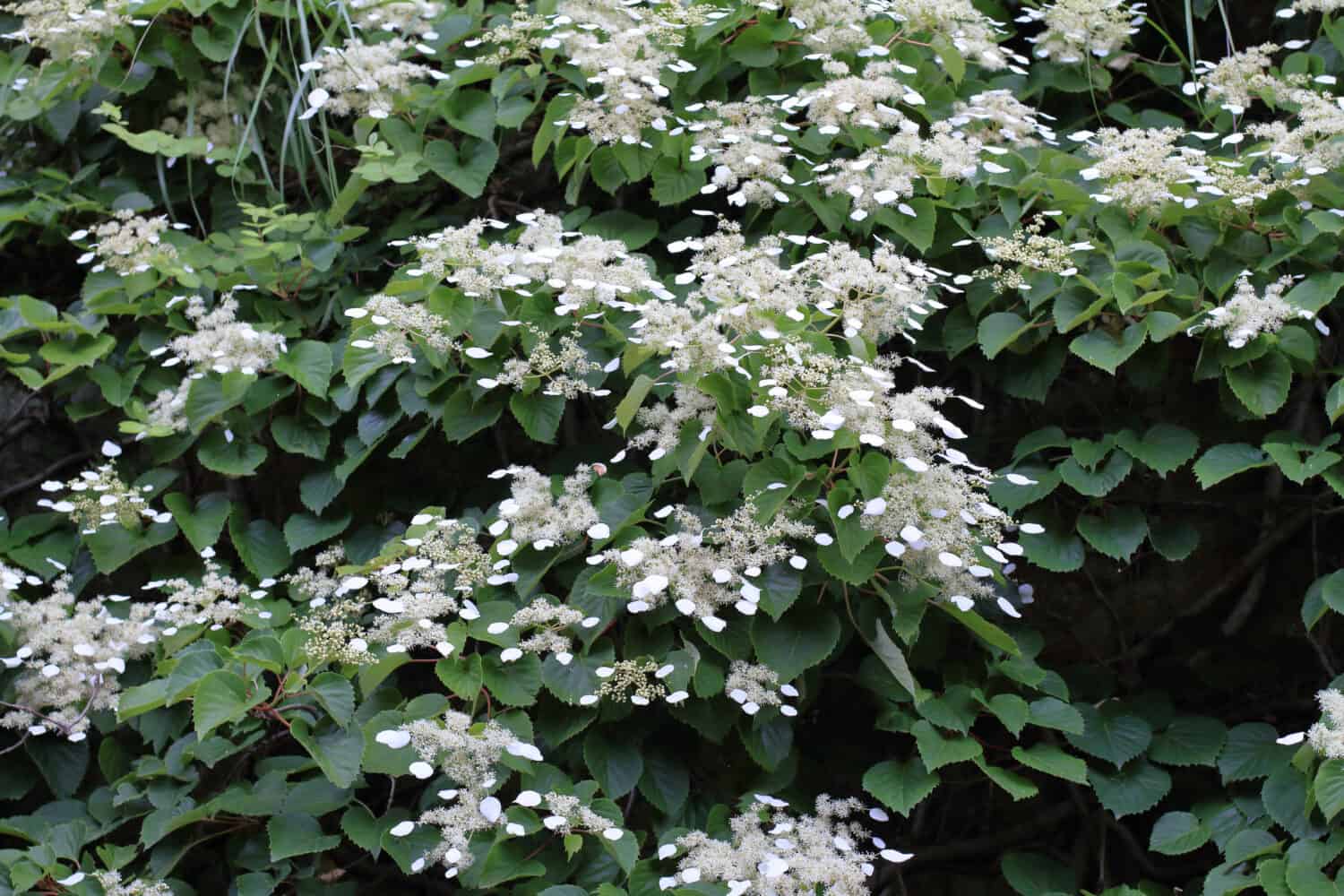
The snake gourd, a white-flowering vine, is commonly found in South and Southeast Asia, including India, Malaysia, Pakistan, and China. Although it is not originally from Africa, it has become naturalized there. Snake gourds are known for their delicious long vegetables, which grow from delicate white flowers that bloom at night. These unique flowers have curly white hairs. The vine also boasts large leaves that can reach up to 10 inches long. Snake gourd fruits can grow up to 59 inches and are consumed as immature vegetables in Asia. As they mature, the fruits turn red and develop a slightly bitter taste.
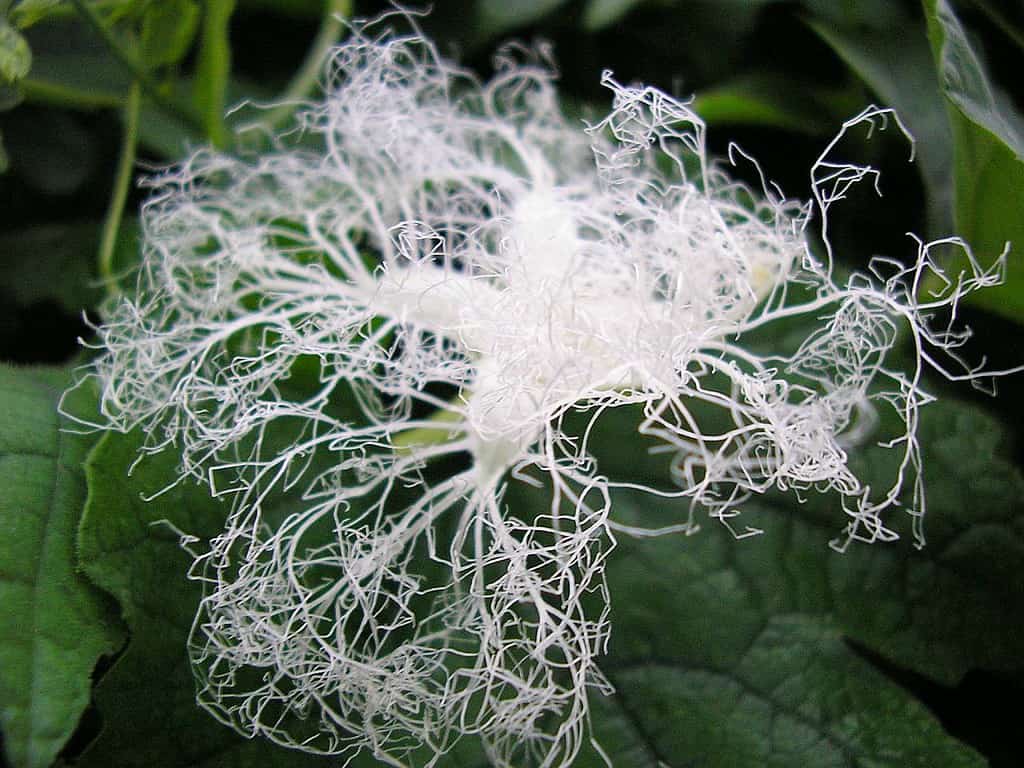
Snake gourds are known for their delicate white flowers that bloom during the night. They have a unique lace-like appearance, adding to their charm. These flowers are captivating and a sight to behold.
Moving on to another white-flowering vine, we have the Southern Dewberry. Belonging to the rose family, this vine is endemic to certain regions of North America, specifically the southern United States and northern Mexico. It comes in two forms: as a vine or as a shrub. If left to grow as a shrub, it can reach a height of approximately 8 feet. On the other hand, as a vine, it gracefully coils and spreads along the ground.
What makes the Southern Dewberry even more appealing is not just its beautiful white flowers, but also the delicious sweet and tart fruits it produces. These fruits ripen in spring and are often enjoyed fresh or used in making flavorful jams.
If you’re interested in growing a thriving Southern Dewberry plant, here’s a helpful tip: remember to water it deeply, but avoid overwatering. Let the soil dry out before giving it another round of hydration. This way, you can ensure that your plant grows large and healthy, yielding plentiful fruits and vibrant flowers.
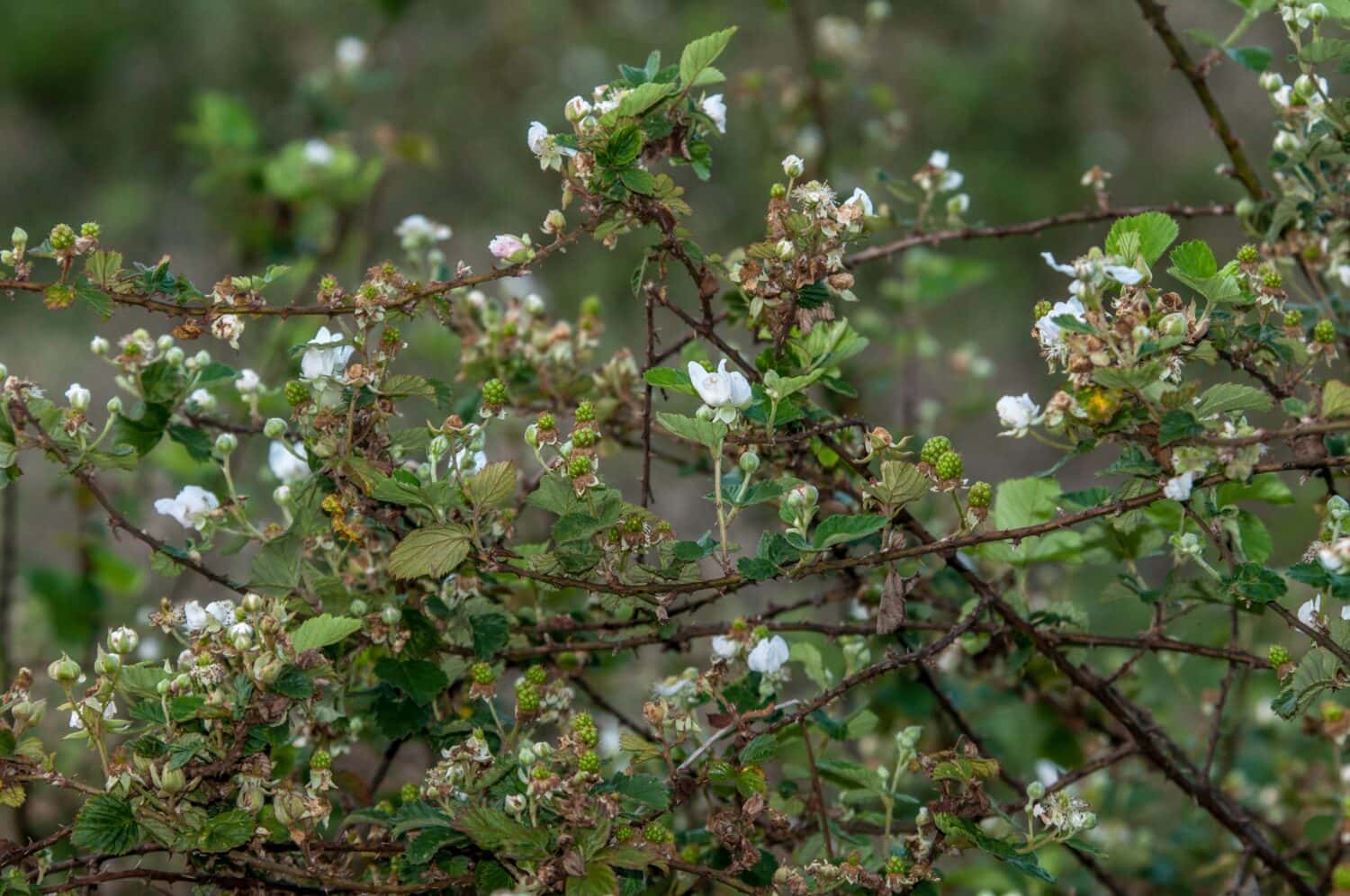
Introducing another vine that showcases stunning white blossoms: the southern dewberry. This versatile plant can also be grown as a shrub, offering a variety of options for gardeners. With its enticing charm, the southern dewberry stands out as a wonderful addition to any garden landscape.
Moving on to the enchanting white coral vine, also known as the queen’s wreath. Donning the title of a true floral beauty, this vine is not limited to producing solely white flowers. In fact, its blossoms can range from dark to light pink, adding a touch of versatility to its allure.
Originally native to the Pacific and Atlantic coastal plains of Mexico, the white coral vine has gradually found its way into many southern states of the United States. This captivating vine has become a popular choice for garden enthusiasts, as it thrives in tall and shady environments, providing a sense of tranquility and elegance.
For those interested in cultivating the white coral vine, the ideal time for planting seeds is during the spring season. By starting this process indoors, you can ensure a successful and rewarding growth journey for this remarkable vine.
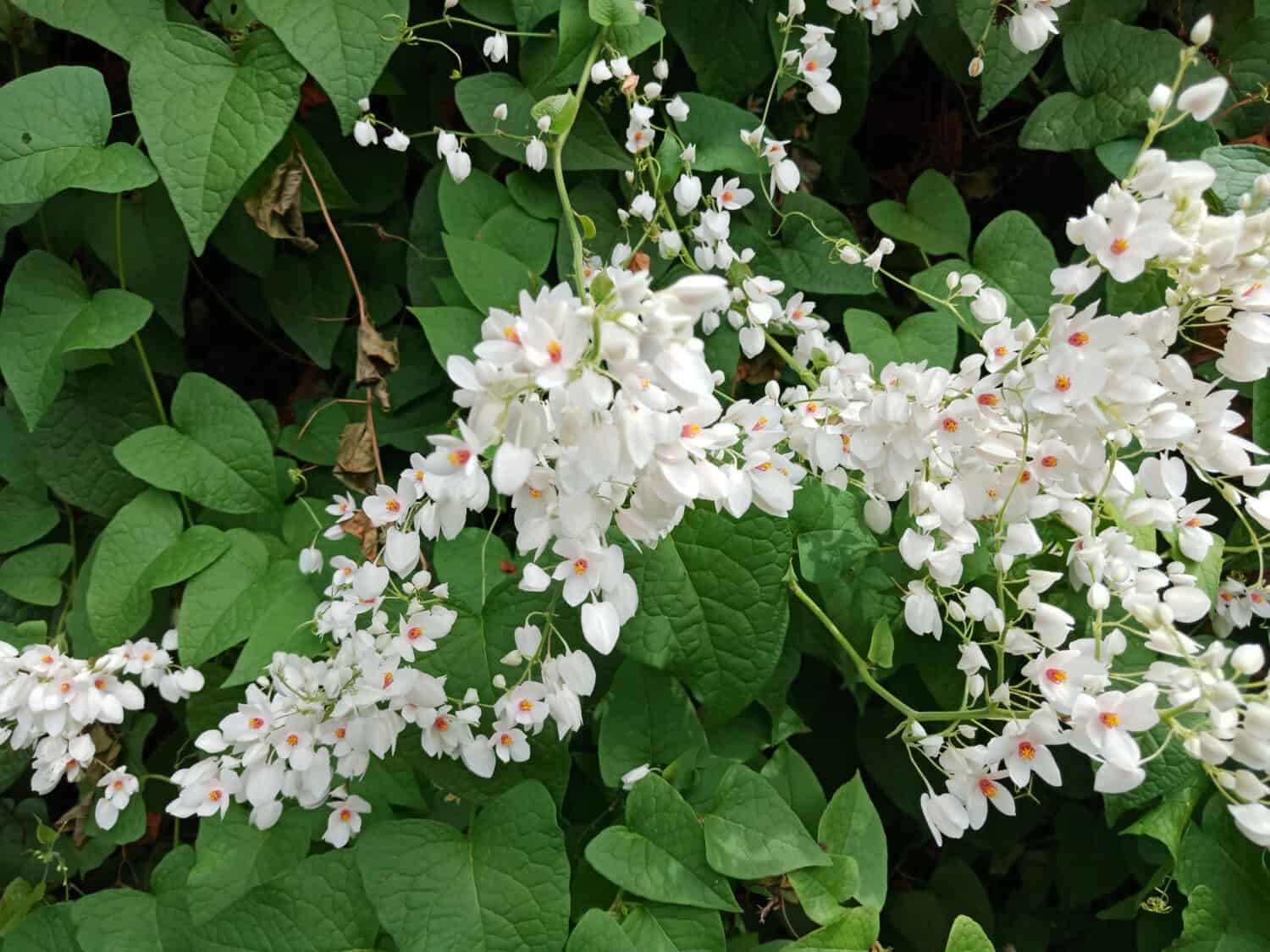
Introducing the exquisite white sky vine, a magnificent flowering vine that hails from Mexico. Scientifically known as Thunbergia grandiflora ‘Alba’, this delightful plant is also referred to as the white Bengal clock vine. Its lush evergreen foliage boasts thick dark green leaves and stems that resemble ropes. Adding to its allure, the flowers not only portray a pristine white hue but also feature a captivating yellow-striped center. These blossoms grace our gardens from the middle of summer until late autumn, with a width of approximately 3 inches. Nevertheless, it’s important to note that white sky vines prefer warmer climates and may not flourish in cold weather. Consequently, they thrive best in USDA growing zones 8a to 11b. As planting near a trellis or fence enables optimal growth and space management, it is recommended to utilize this strategy.
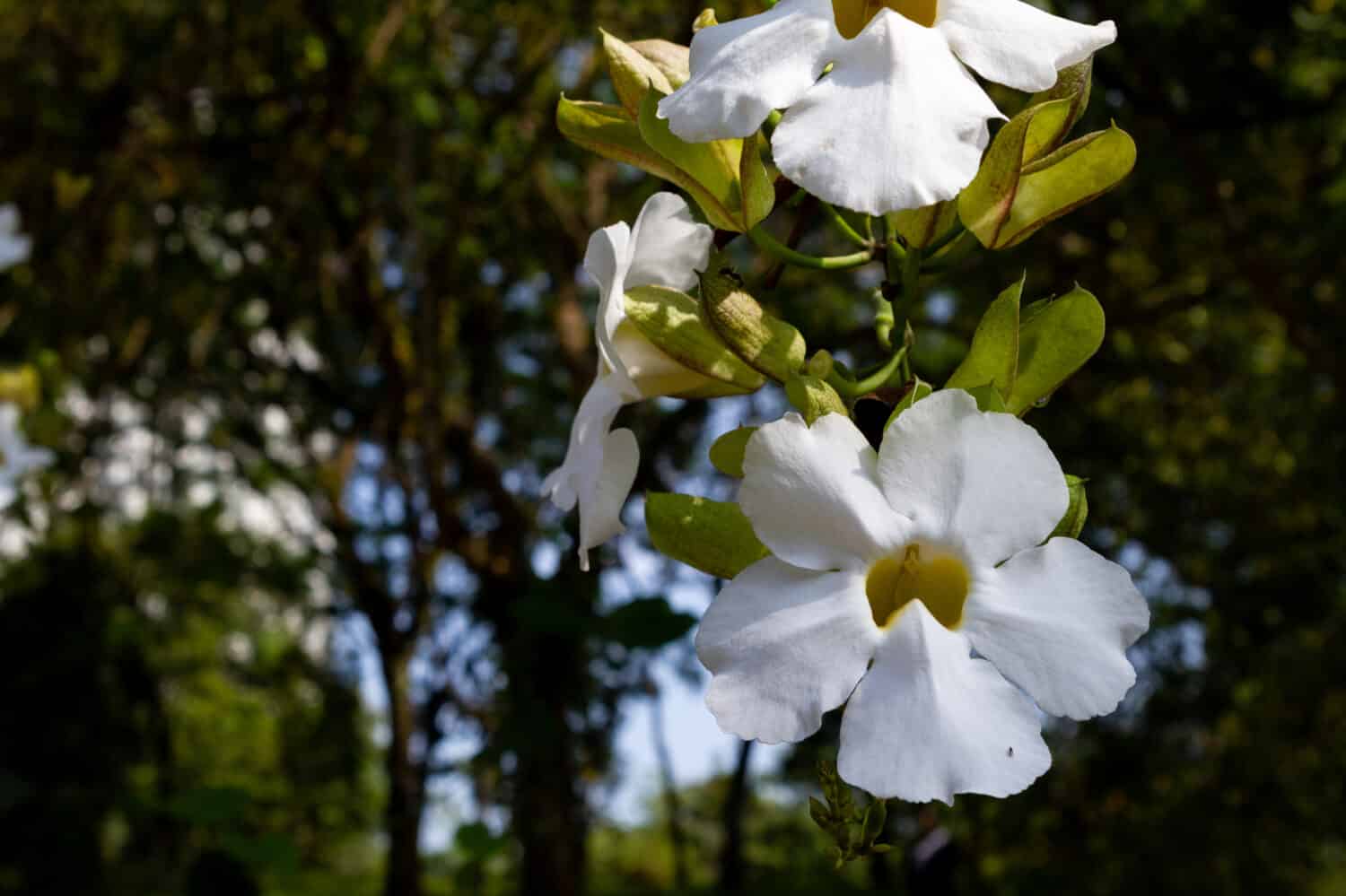
1. White sky vines are known for their exquisite white flowers with yellow-striped centers.
2. Even though snail vine flowers are not completely white, they are still included on this list due to their unique characteristics.
3. Belonging to the Fabaceae family, snail vines are famous for their one-of-a-kind, snail-shell-shaped flowers that emit a pleasant fragrance.
4. Sometimes referred to as the corkscrew vine, snail vines can also resemble corkscrews in shape.
5. Native to Central and South America, snail vines can either be annuals or perennials, depending on the conditions they are grown in.
6. During the summer, snail vines produce clusters of small, fragrant flowers in vibrant shades of pink, purple, and white.
7. If these flowers are successfully pollinated, they will develop seedpods, providing an opportunity to harvest and grow multiple snail vines.
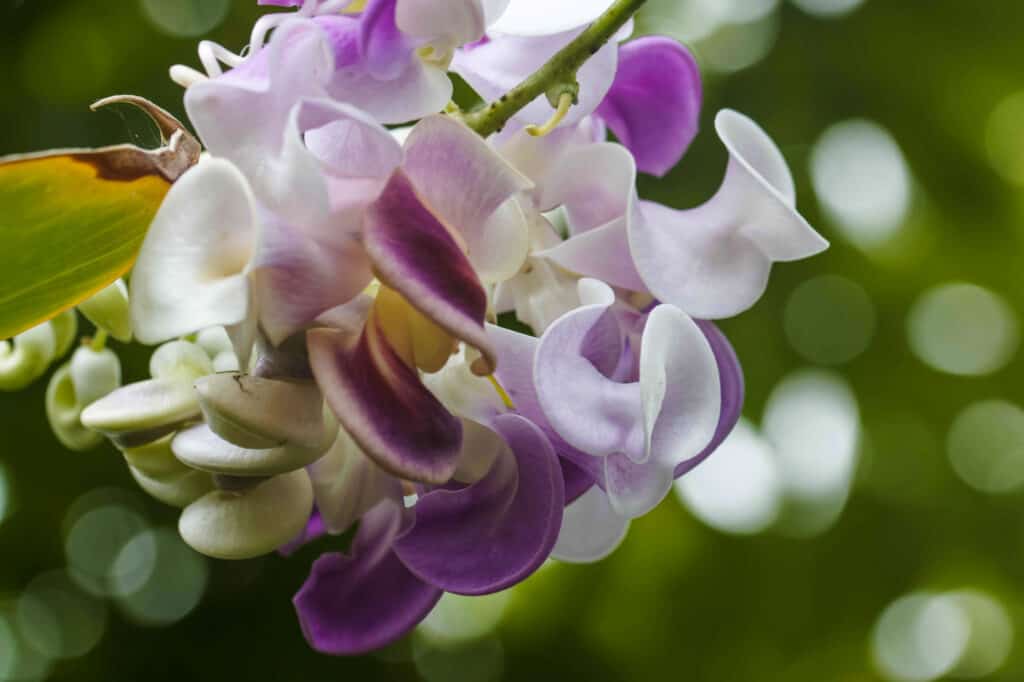
The white mandevilla vine is the seventh vine on our list that produces beautiful white flowers. Mandevilla is a genus of flowering plants known for its various colors. These vines were officially described in 1840 and are commonly known as rock trumpets. Native to parts of North and South America, these vines can be found in the Serra dos Órgãos forests in Rio de Janeiro, Brazil. White mandevilla vines are vibrant climbers that are ideal for those who desire a climbing vine with large, fragrant flowers. Growing them along a trellis or fence adds a touch of beauty to any garden.

The Mandevilla vines offer a diverse range of options with various colors and pleasant fragrances. One such option is the climbing white jasmine, also known as the true or common jasmine. This attractive flowering plant belongs to the olive family and goes by the scientific name Jasminum officinale. While its native habitat is limited to certain parts of Asia and the Caucasus, it has successfully adapted and spread across the globe.
The climbing white jasmine is highly regarded as a garden favorite. During the summer months, it proudly displays an impressive array of small white flowers, often numbering in the hundreds or thousands. The plant’s abundance of delicate yet fragrant flowers adds to its allure. In addition to its aesthetic appeal, jasmine flowers are sought after for their potential use in aromatherapy, offering a pleasant and calming scent. It is also a popular choice for perfumes due to its sweet and heavy fragrance.
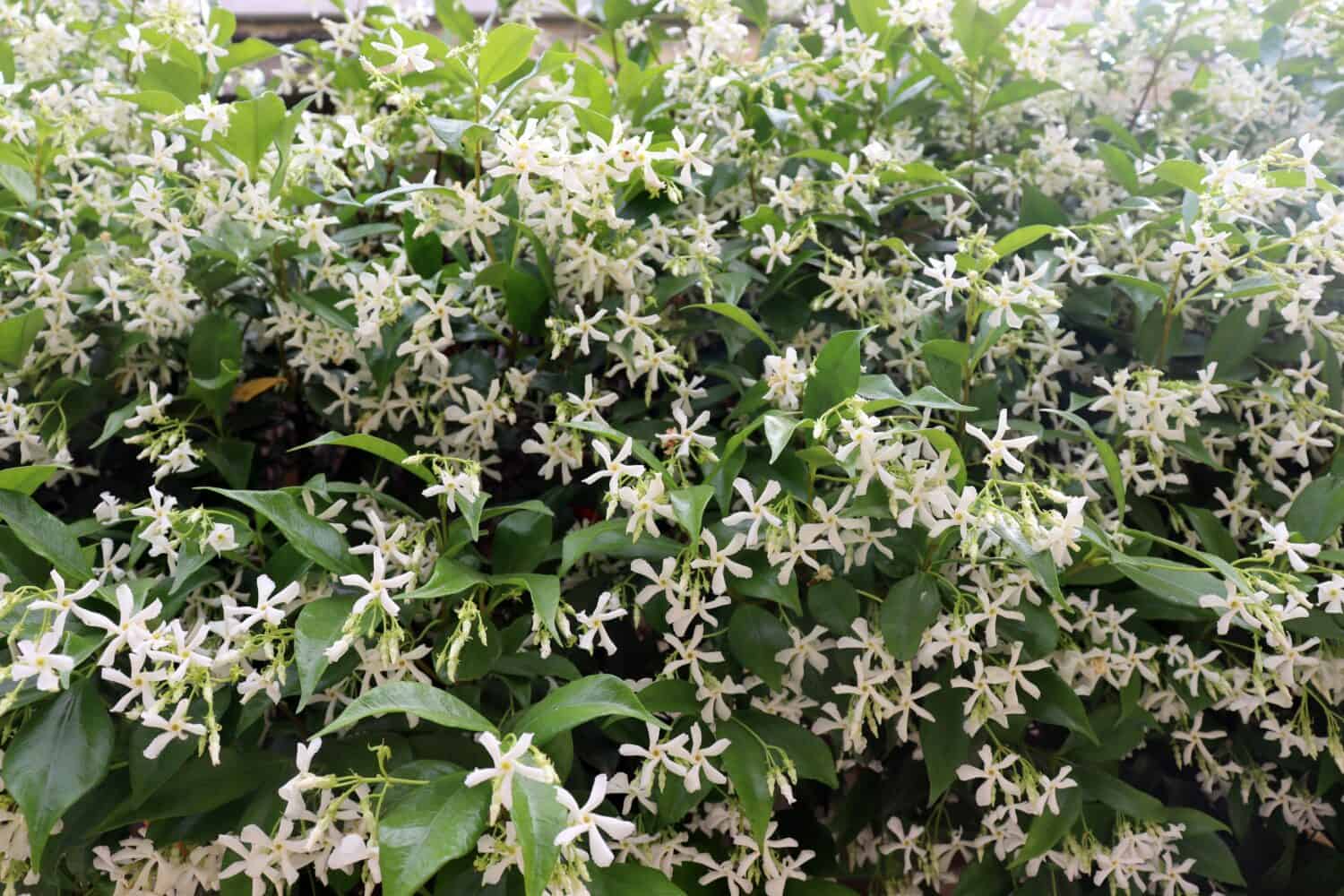
One of the delightful vines on our list is the white flowering honeysuckle vine, also known as the western white honeysuckle. With its scientific name Lonicera albiflora, this stunning vine is native to various parts of the southeastern United States such as Oklahoma, Arizona, New Mexico, and Texas. It has the ability to grow either as a small leafy vine or as a shrub, reaching a maximum height of about 4 feet. However, in some cases, it can even grow up to 10 feet tall. The flowers of this vine come in small clusters, measuring approximately 2 inches in size. They adorn the vine with their beauty in the spring months, blooming from March through May.
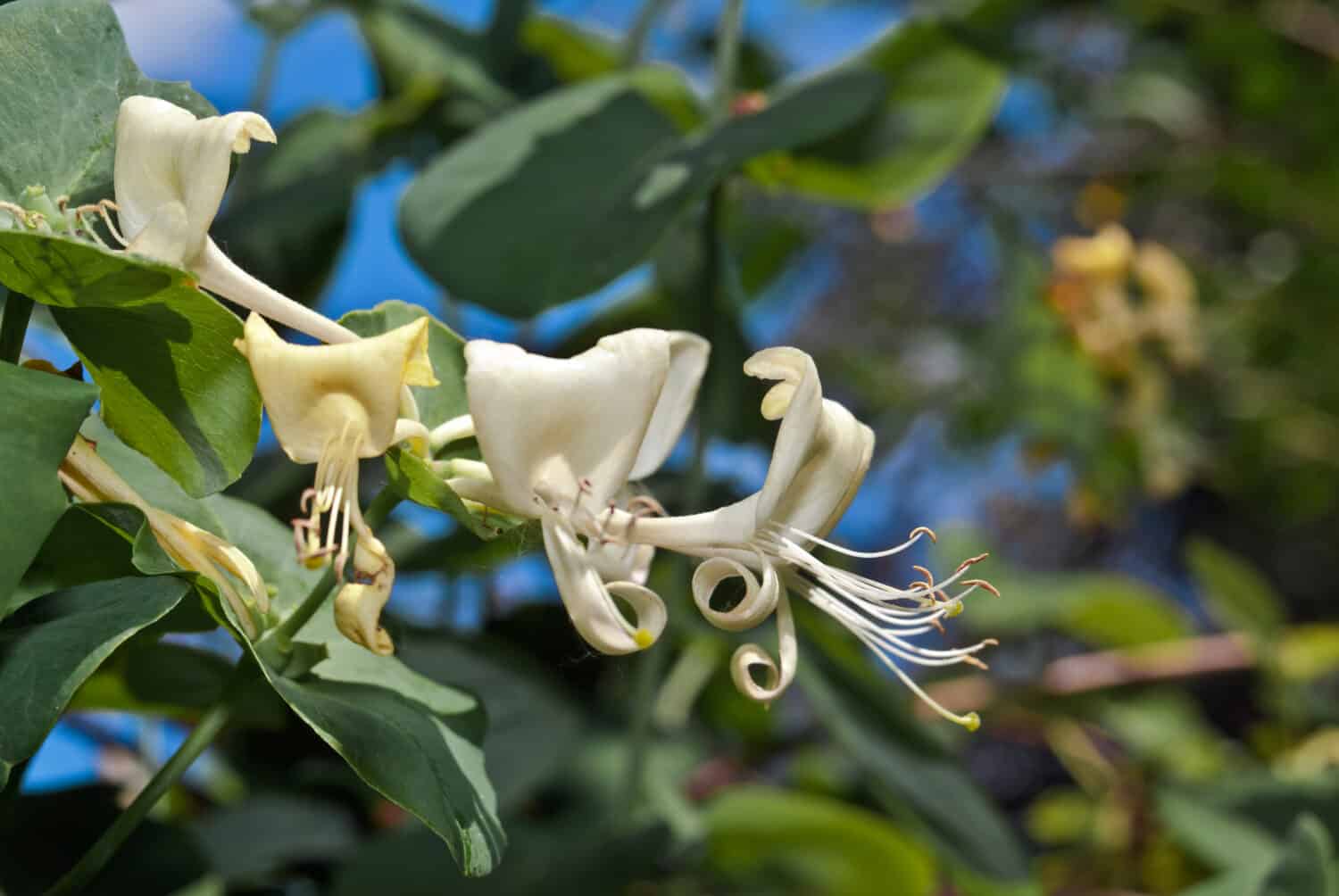
Are you familiar with the bleeding heart vine? It’s a one-of-a-kind and lively flowering plant that belongs to the Lamiaceae family. Known by its scientific name, Clerodendrum thomsoniae, this vine is indigenous to tropical west Africa, stretching from Cameroon to Senegal. Its striking appearance includes large, dark green leaves that are shaped like ovals or oblongs, reaching about 7 inches in length. The flowers, which blossom in clusters, display a beautiful combination of white and light pink hues, complemented by a red five-lobed corolla. Bleeding heart vines are immensely popular as decorative flowers, commonly seen in the gardens of warm southern regions. However, they are sensitive to frost and must be protected accordingly.
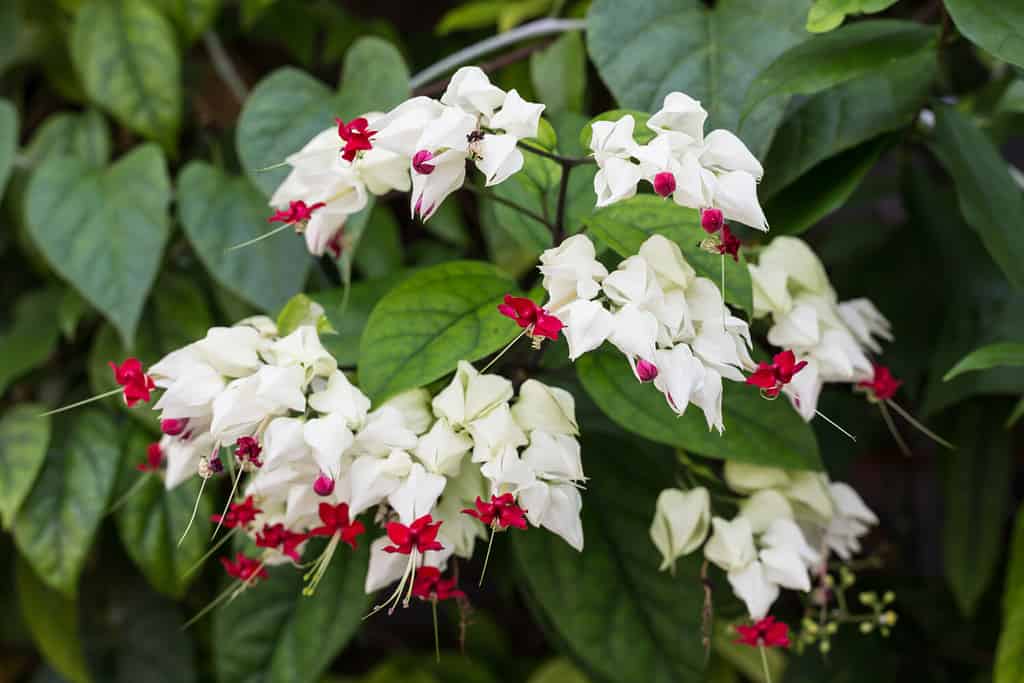
Bleeding heart vines, also known as bagflowers, have various names. Another name for these vines is wild cucumbers. These vines produce beautiful white flowers and their scientific name is Echinocystis lobata. Originally from North America, they can be found in 40 states within the United States. However, they are not native to the southeastern part of the country. With a maximum length of 26 feet, these annual vines are great climbers and can be easily grown on trellises. Despite their attractive appearance, the fruits of wild cucumbers are not suitable for consumption.
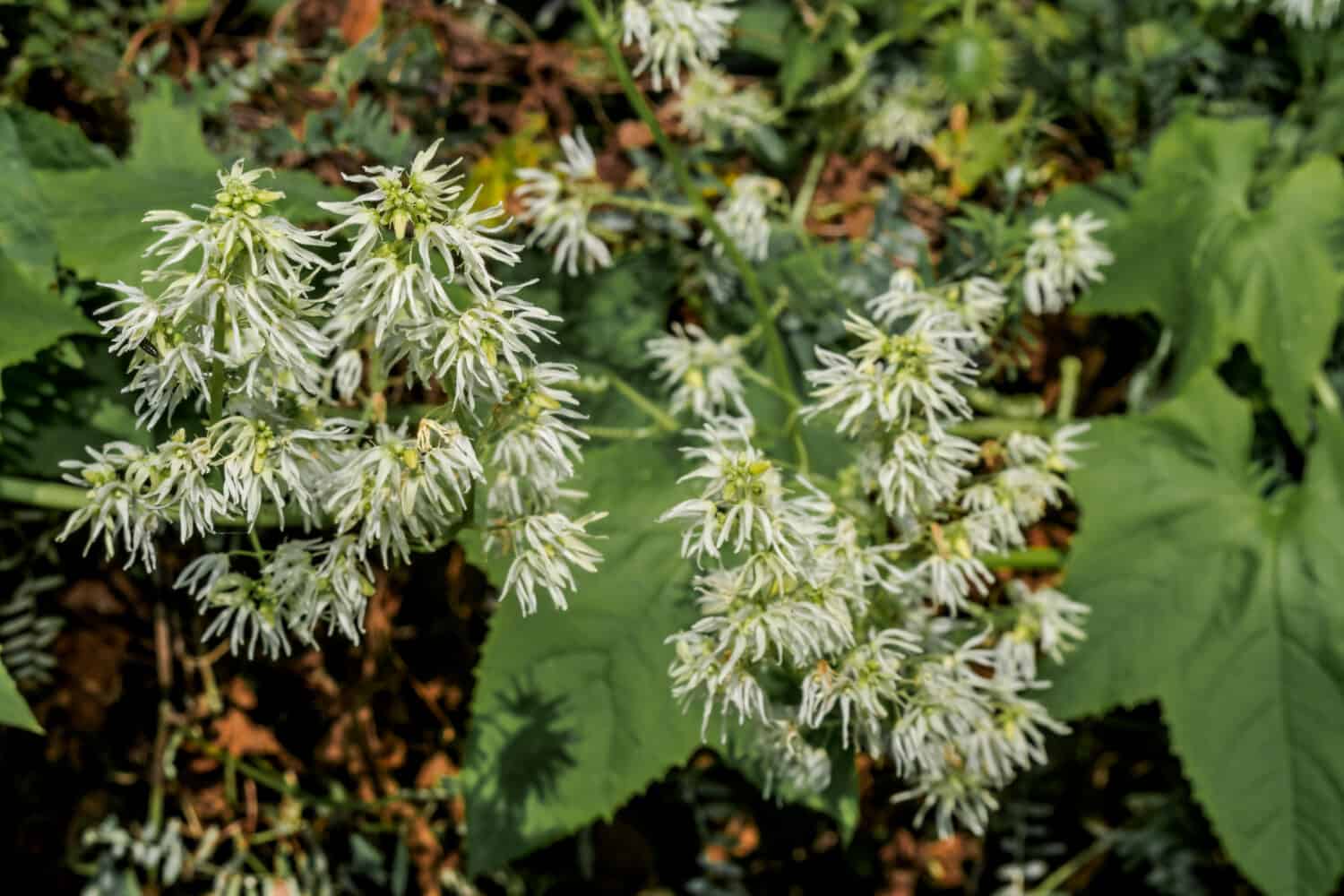
Wild cucumber fruits are not suitable for consumption. (Image Attribution: Nick Pecker/Shutterstock.com)
12. White Bougainvillea
The twelfth entry on our list of vines that boast breathtaking white blossoms is none other than the bougainvillea. Although not all bougainvillea flowers are white, as they can come in shades of pink, yellow, red, or purple. These thorny and visually pleasing vines can sometimes take on the form of shrubs. Within the bougainvillea genus, you can find around 4 to 22 species of vines, as well as numerous cultivars. The height of this plant varies depending on the species, ranging from 3 to 39 feet. Growing white bougainvillea vines is recommended in warmer climates such as USDA growing zones 9b and 10, and they can be cultivated in both the ground and containers. They also thrive in hanging baskets.
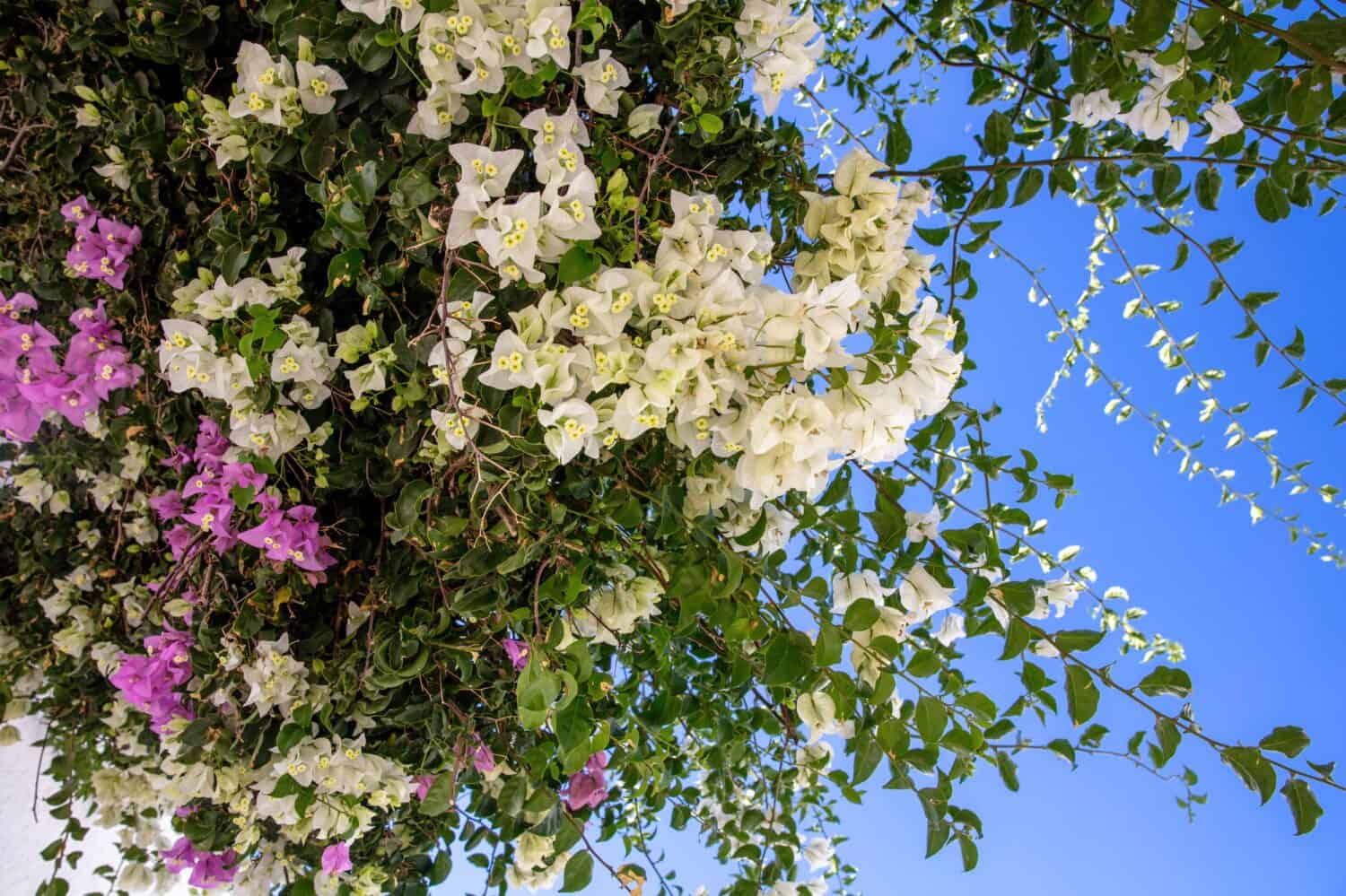
One of the most popular flowers on our list is the white morning glory. These flowers are quite common and come in thousands of different species, each with their own unique color and size. The morning glory vines are known for their long and showy appearance, especially when they bloom during the spring and summer months. They can grow up to 10 feet in length, making them a stunning addition to any garden. These vines are also quite resilient and can thrive in various USDA growing zones, ranging from 2 to 11. Another great advantage of morning glory vines is that they do not require a large amount of space to grow. They can be easily planted in containers, allowing you to enjoy their beauty even if you have limited garden space.
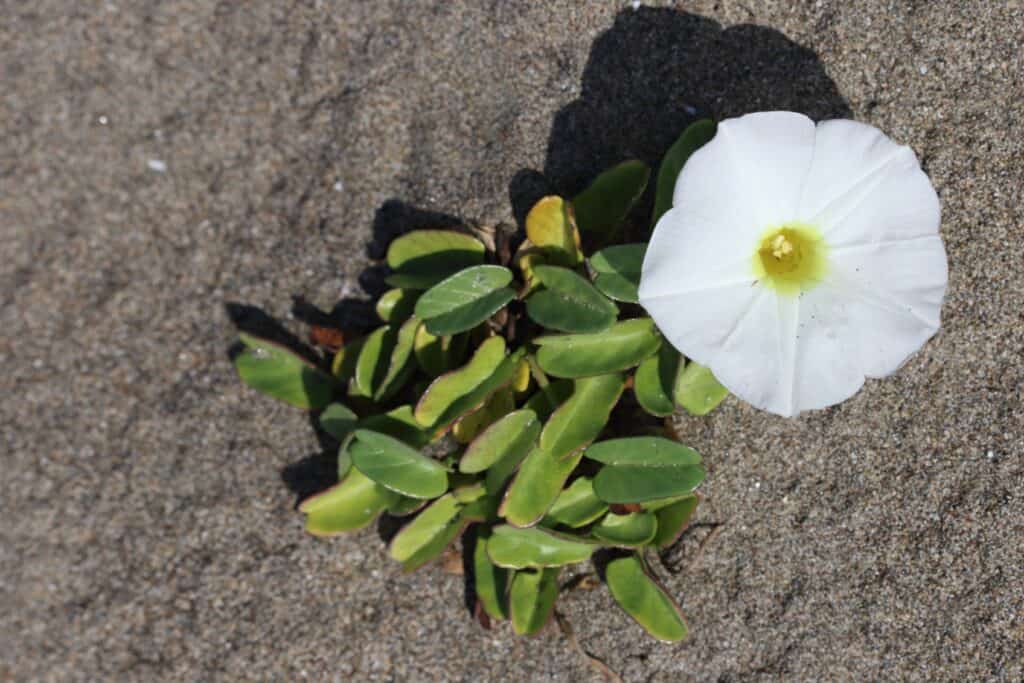
There is an abundance of morning glory species to choose from. One notable species is the White Japanese Wisteria, a captivating hanging plant that adds a delightful and serene touch to any yard. This particular species originates from Korea and Japan. With its twining vines and long branches adorned with graceful white flowers, it truly creates a mesmerizing sight. Additionally, these flowers emit a lovely fragrance and bloom profusely during the spring season. While it is possible to start growing this plant in a container, it is important to provide it with ample space to flourish, and it is recommended to transplant it near a sturdy structure for support. Under optimal conditions, the White Japanese Wisteria can reach impressive heights of 30 feet and spread outwards up to 20 feet.
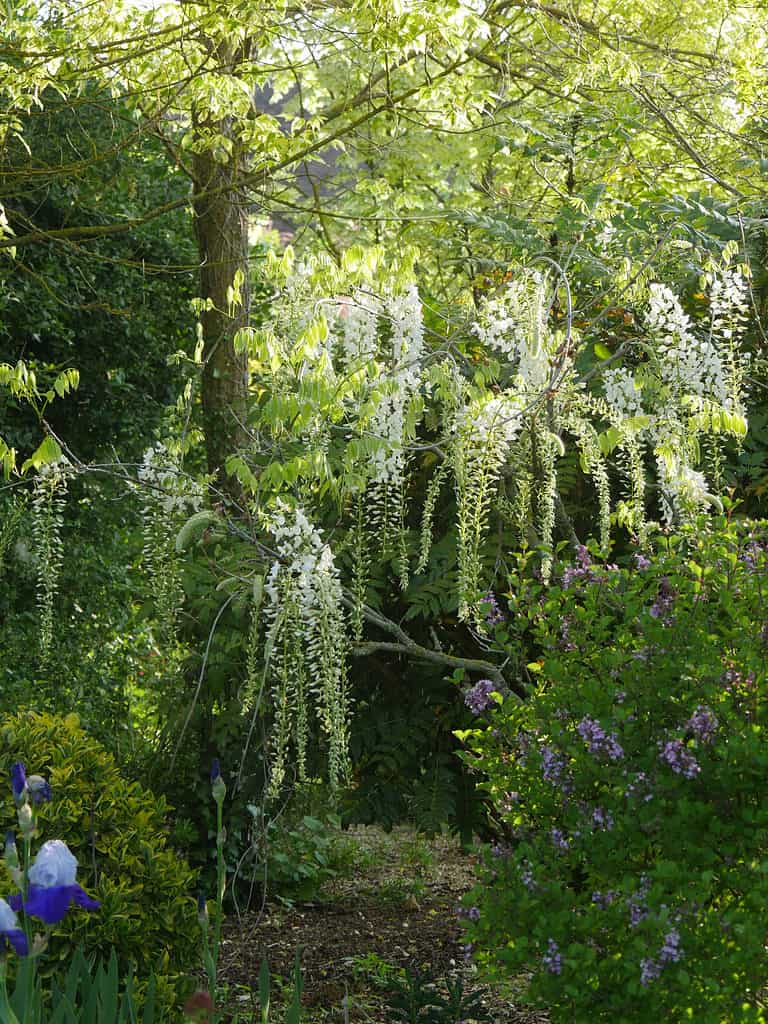
White trailing fuchsia vines are captivating and enchanting plants that demand attention. With their sprawling and robust vines, these extraordinary plants can also take the form of shrubs or petite trees. Belonging to the fuchsia family, Onagraceae, these trailing fuchsia vines are sought-after additions to numerous gardens throughout North America. Interestingly, their natural habitat resides in the southern regions of Peru, Bolivia, and northern Argentina. Despite being commonly referred to as “white,” these stunning flowering vines exhibit a delightful blend of pink, white, and yellow-green hues. Their blossoms boast an elongated, slender shape, forming charming clusters that add a touch of elegance to any landscape.
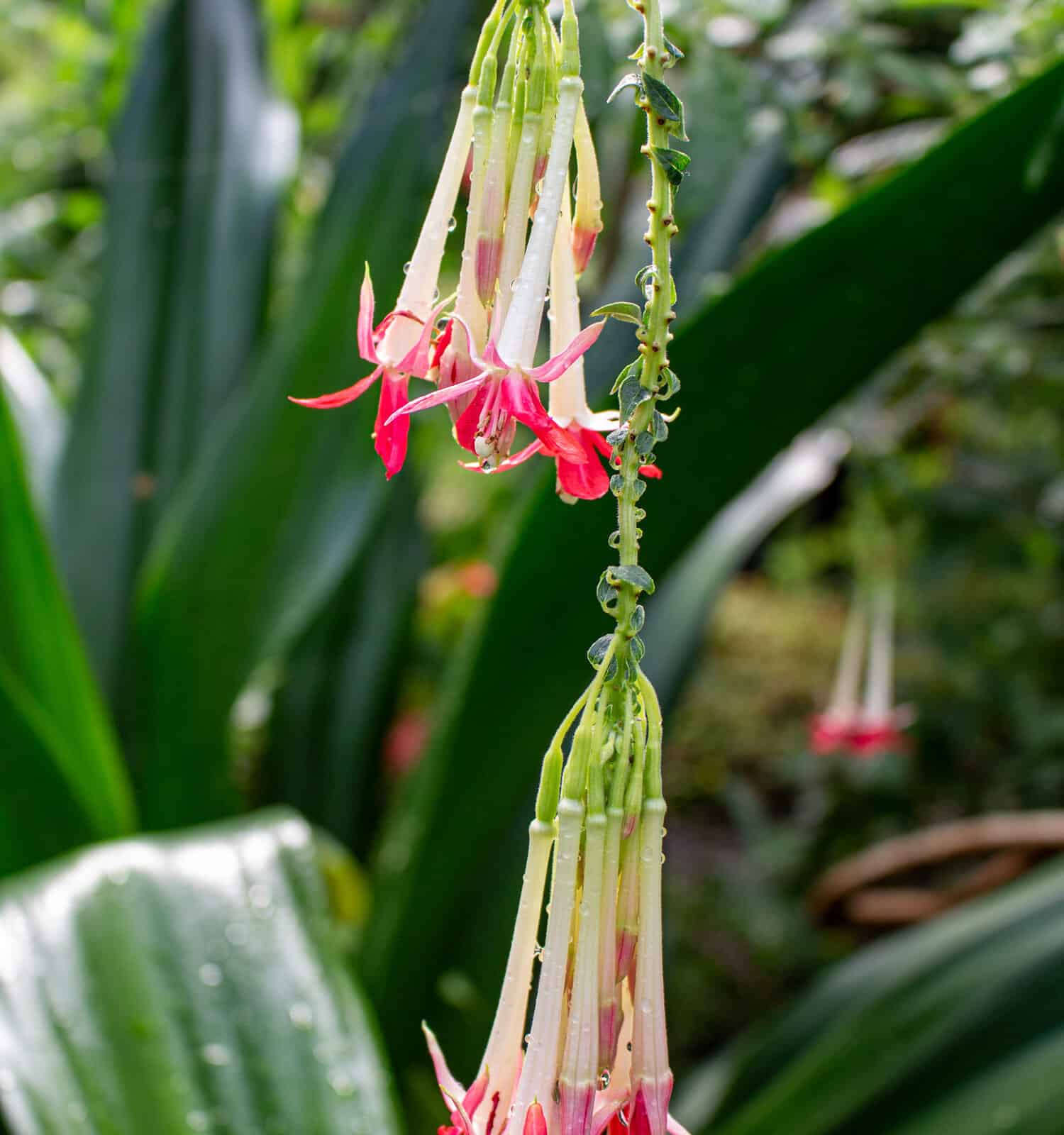
16. Clematis with White Flowers
Included in our collection of vines that showcase stunning white flowers is the white flowering clematis. This beautiful blossom is also commonly referred to as the leatherflower. It is important to note that clematis is not a specific species, but rather a genus that belongs to the Ranunculaceae family. The white flowers vary in their size, fragrance, and hue. Some exhibit a bright white color with an elegant and sweet aroma, while others are larger in size, red in color, and display a slender appearance. One popular variety of white flowering clematis is the Clematis ligusticifolia, which is also recognized as Old-man’s Beard.
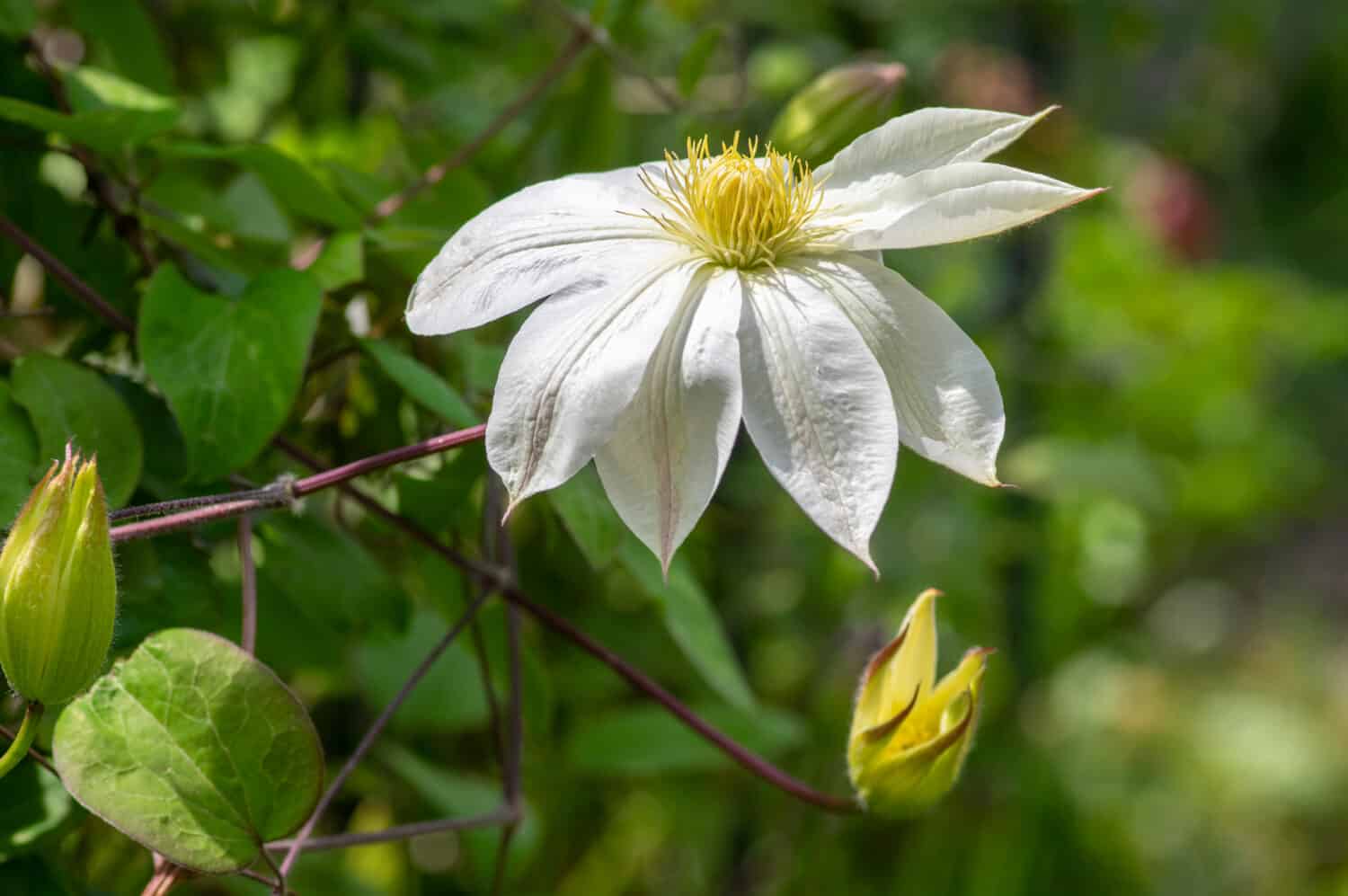
The charming sweet pea, with its delicate and lovely small flowers, originates from Sicily, southern Italy, and the Aegean Islands. Scientifically known as Lathyrus odoratus, these beautiful plants are annual vines that grow rapidly, often reaching heights of up to 6 feet and 7 inches. The sweet pea flowers come in a variety of colors, ranging from bi-colored to solid red, purple, pink, or blue. However, despite their stunning appearance, these vibrant flowers are susceptible to numerous diseases and pests, including troublesome aphids. One sign of an aphid infestation in sweet pea plants is the yellowing and wilting of leaves.
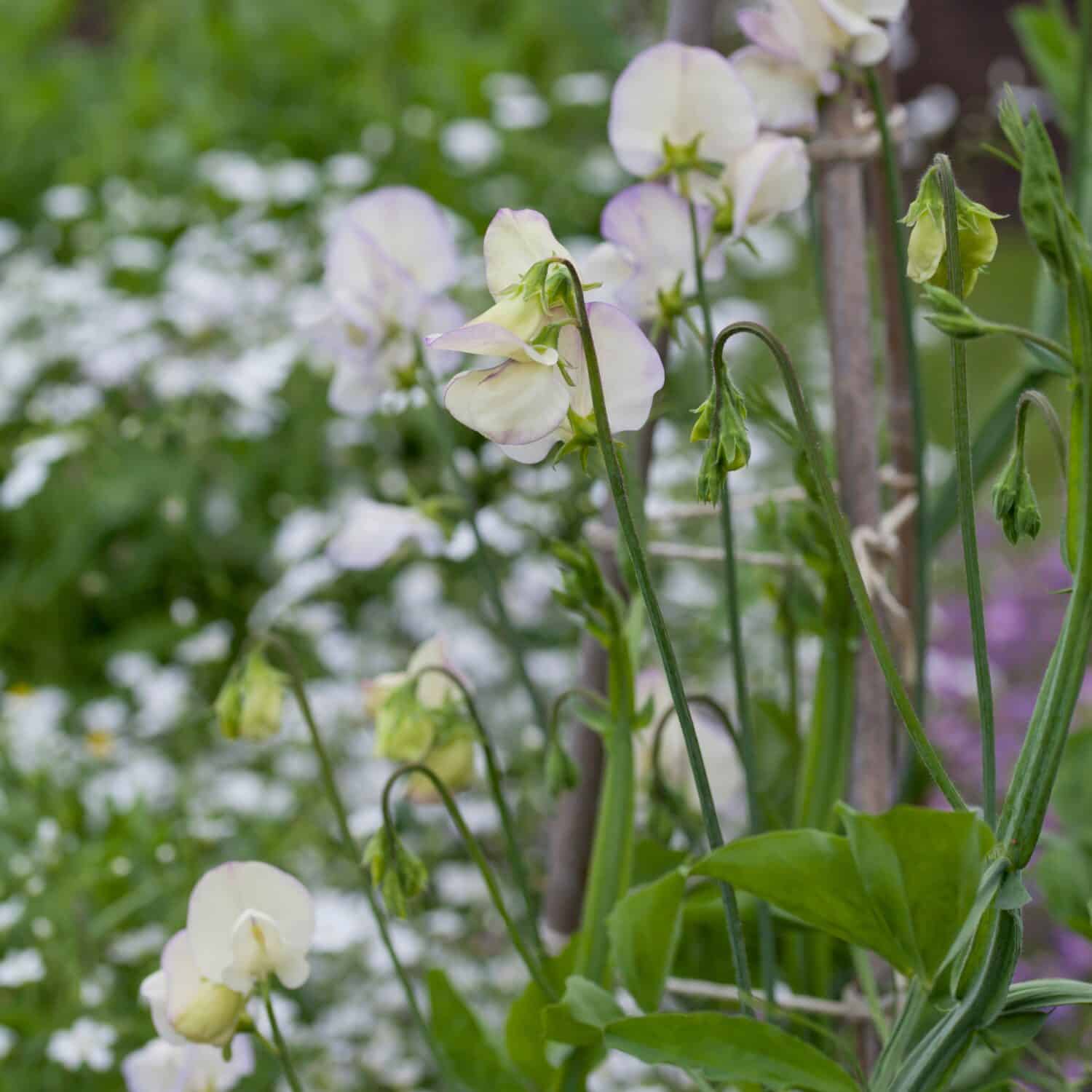
Moonflowers are enchanting plants that possess an alluring quality. With their intriguing name and captivating appearance, these extraordinary flowers originate from tropical and subtropical areas in North and South America. Adorned with white blossoms and adorned with deep green, heart-shaped leaves, moonflowers are perennial vines that can reach impressive heights of up to 98 feet. The foliage of these plants measures around 2 to 5.9 inches in length. Known as tropical white morning glories, moonflowers have a unique blooming pattern, unfurling their petals after dusk and gracefully closing during daylight hours, often coinciding with the arrival of morning dew. It is this fascinating characteristic that is believed to have inspired their name, evoking a sense of mystery and wonder.

Moonflowers are known for their blooming pattern, which occurs at night and during cooler weather conditions. Additionally, we have another jasmine plant to add to our list: the white Madagascar jasmine, scientifically known as Stephanotis floribunda. This beautiful flower originates from Madagascar and grows as a flowering vine. Its branches are long and winding, and it produces star-shaped flowers that are white and waxy in appearance. Notably, these flowers emit a strong fragrance. The white Madagascar jasmine blooms specifically during the summer season and has the potential to grow up to a height of 20 feet.

The white butterfly pea is a beautiful flower that can be found on the Indonesian island of Ternate. It is also native to Africa and Australia, making it a versatile and adaptable plant. This pea vine is a popular choice for spring gardens as it adds a touch of elegance and charm. Often referred to as the Asian pigeonwing or blue pea, the white butterfly pea is a member of the Fabaceae family. While some varieties of butterfly pea have deep violet hues with white centers, others showcase a delightful combination of pink and white petals. One of the remarkable qualities of these plants is their strength and resilience, as they rarely fall victim to diseases or illnesses.

The white butterfly pea, also known as the Asian pigeonwing, has an alternative name. It is called the runner bean ‘White Lady.’ This particular bean species is characterized by its vine-like growth and small, delicate white flowers. Apart from being referred to as the runner bean ‘White Lady,’ it is also known as the scarlet runner bean and the butter bean, although the term ‘butter bean’ is sometimes used for lima beans as well. These white lady runner beans can be cultivated both for ornamental purposes and as a source of food. The beans found within the seed pods are edible and have been cultivated for centuries, tracing back to approximately 2000 BC. It is important to note that while runner beans are often associated with red flowers and beans, not all varieties possess this characteristic.
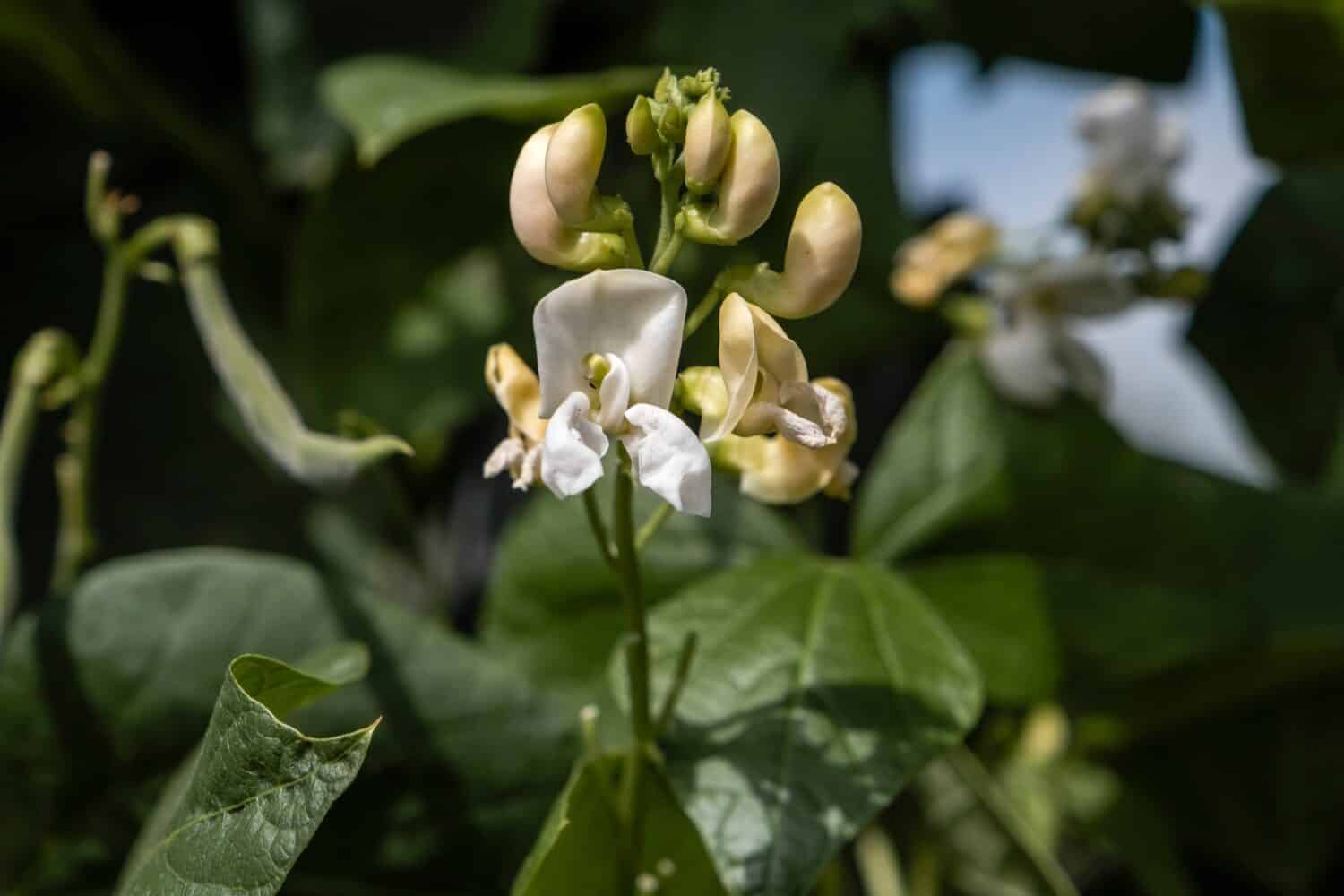
Runner beans are known by various names and are often referred to as butter beans, which should not be mistaken for lima beans.
One more plant worth mentioning is the white passion fruit flower vine. These passion fruit plants are fast-growing vines that spread rapidly. Each variety of passion fruit plant has its own distinct flower. While the white passion fruit flower vine produces white flowers, they are not completely white. These fragrant flowers have hints of purple and pink, resembling stars. The plant then produces small, tart yellow-green fruits from these beautiful flowers.

White passion flowers can bear small fruit that is colored yellow-green. It is important to note that not all passion flowers possess the white hue.




